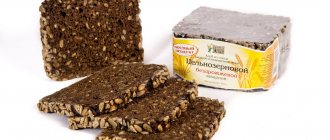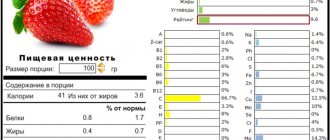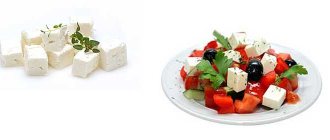Properties of whey
Nutritional value and composition | Vitamins | Minerals
How much does whey cost (average price for 1 liter)?
Moscow and Moscow region.
60 rub.
It is known that whey is obtained in the process of making cottage cheese. This happens as follows: when sour milk is heated, curdling occurs, as a result of which the mass is divided into two parts - the cottage cheese itself and the whey. Cottage cheese is used for its intended purpose - in nutrition, while whey is used in many cases.
As a rule, the main way to use whey is to use it as an independent product, but it often acts as a natural substitute for all kinds of cosmetics. But still, the use in cooking is at the forefront. So, on its basis you can prepare excellent tasty and medicinal drinks - just mix whey with vegetable or fruit juice. Double healing effects can be achieved by preparing a cocktail of whey and a decoction of medicinal herbs.
It is quite difficult to give children this healthy product, so making a delicious jelly from whey is considered an excellent solution in this situation. It is unlikely that kids will refuse such a dessert if it contains berries or fruits. This dish will not only refresh and give you a boost of energy, but will also enrich your small body with a large amount of vitamins and minerals - this indicates the considerable beneficial properties of whey.
Whey in cooking
Whey is rarely sold in stores, and purchasing such a product on the market is simply dangerous. Therefore, it is recommended to prepare whey from milk at home: the process is not labor-intensive, and the resulting product will be fresh and tasty.
You can prepare two products at once from 2-3 liters of milk: whey and cottage cheese. To do this, pour the milk into a jar and send it to a warm place for 1-2 days; to speed up the souring process, you can dilute the milk with 1 tbsp. l. sour cream. After fermentation, pour the milk into a saucepan, put it on the fire and heat, but do not boil. Simmer the fermented milk until clots appear. After this, turn off the gas, wait until it cools down, put gauze over a colander and drain the whey into a jar, and hang the cottage cheese in the gauze so that the liquid drains from it.
Gastronomic advice! You don’t have to wait 2-3 days for ripening and don’t put sour cream in the milk: immediately put it on the fire, add lemon juice (take the juice of 1 lemon for 1 liter of milk). Note that the taste of whey and cottage cheese does not change.
Whey composition
It has been proven that whey contains proteins, which include essential amino acids that cannot be produced independently by the body. Therefore, the only possible way for them to enter the body is through food.
In addition, the composition of whey is rich in minerals, along with a number of vital vitamins. These are potassium, magnesium, phosphorus, calcium, vitamins PP, E, C, H and group B. It also contains choline, biotin and nicotinic acid.
Serum composition
What makes the serum so exceptional? Firstly, it is relatively easy to obtain, and at the same time it is rich in both nutritional and biological composition. It consists of a significant amino acid profile as well as several functional components that support the immune system. In the table below you will find all the components of the whey and their percentages. [12]
| Substances | % in serum |
| Beta-lactoglobulin | 45 – 57 % |
| Alpha-lactalbumin | 15 – 25 % |
| Immunoglobulins | 10 – 15 % |
| Glycomacropeptides | 10 – 15 % |
| Bovine serum albumin | 8 – 10 % |
| Lactoferrin | 1 % |
| Lactoperoxidase | <1 % |
Let's look at the importance of each component. [1] [5] [8]
- Beta-lactoglobulin - about 25% of its composition is BCAA amino acids, especially leucine. Branched chain amino acids BCAA promote protein synthesis, muscle growth and regeneration.
- Alpha-lactalbumin - contains about 6% of the amino acid tryptophan, which is the basis for the formation of serotonin, the so-called happiness hormone. At the same time, alpha-lactalbumin is rich in lysine, leucine, thionine and cysteine. It has the ability to bind minerals such as calcium and zinc and has a positive effect on their absorption.
- Immunoglobulins – serum contains 4 types of immunoglobulins, namely IgG, IgA, IgM and IgE, which contain antioxidants and significantly improve the functioning of the immune system.
- Glycomacropeptides are released during cheese production from digested casein. Rich in essential amino acids that promote mineral absorption.
- Bovine serum albumin has a diverse amino acid profile and promotes fat burning.
- Lactoferrin triggers the production of anti-inflammatory substances that protect the body from the development of hepatitis.
- Lactoperoxidase is important for its antimicrobial properties.
Benefits of whey
Thanks to its composition, whey literally works wonders. With regular use of this healing product, heavy metal salts, impurities, toxins, as well as excess fluid are removed from the body. The benefits of whey are obvious, because it is a source of natural proteins. These substances have low nutritional value, which determines the incredibly low calorie content of whey.
Experts say that consuming whey and drinks made from it helps maintain a positive emotional state, as well as replenish vitamin deficiency if the intake of nutrients into the human body is too low. In other words, the benefit of whey also lies in the fact that it can partially replace fresh fruits and vegetables.
The nutritional value
Whey is the lowest calorie dairy product. 100 g of whey contains only 21 kcal (112 kJ), so it is especially useful in diets. Whey removes excess fluid from the body, promoting optimal elimination of waste and toxins, as well as weight loss. Whey is a source of natural proteins, carbohydrates, vitamins, amino acids, mineral salts and trace elements - including potassium, calcium, magnesium, phosphorus, vitamins B, A, E, PP, C. The content of free amino acids in whey is 10 times higher than in milk.
Rules for preparing and eating protein
Commercial types of whey protein products are available as dietary supplements. Since the powders have good solubility, they can be added to any drinks and water. Typically, a single dosage is 1 measuring spoon (included with a bag or jar) per 200 ml of liquid. Before use, you need to stir the solution thoroughly.
Proteins can also be added to breakfast oatmeal, yogurt, and homemade baked goods to increase its nutritional value. Currently, a wide variety of dietary supplements are produced with various flavors and tastes, as well as additional useful components.
The average dosage for quickly gaining muscle mass during training is 1.5-2 g of protein per 1 kg of body weight per day. There are no strict rules on when to take dietary supplements, but it is best to adhere to the recommendations outlined below.
In general, the optimal interval between protein intake is 3-5 hours - this is the time necessary for the quality absorption of not only proteins, but also other nutrients.
If the goal of training is to lose weight, then it is recommended to consume proteins evenly throughout the day in between meals, and also reduce the amount of fats and carbohydrates. Too intense training can lead to the opposite effect - a decrease in not only fat, but also muscle mass (and it is restored much more slowly), and disruption of metabolic processes.
In the morning hours
After a long night's sleep, when the body has not received nutrients for a long time, it may begin to use energy reserves in the form of glycogen, a form of glucose that is stored mainly in muscle tissue and the liver.
Amino acids will also be useful if you cannot eat for a long time, for example, when you need to go to work after training.
Half an hour after drinking a protein shake, it is recommended to have a full breakfast. You can consume proteins in the morning and evening on rest days when there are no workouts.
Before training
It is recommended to take proteins before physical activity at the initial stage of training, since with their low concentration in the blood, muscle protein will break down.
However, drinking a large amount of protein drink and food is not recommended, as training and simultaneous digestion of food increases the load on the body.
Upon completion of the lesson
Whey protein is a product that is primarily designed to build muscle mass. The most optimal time to consume proteins is immediately after training. There is a so-called “anabolic window” – 15-30 minutes. immediately after exercise, when muscle growth accelerates.
If during this period you replenish energy reserves and the resulting protein deficiency, this will promote muscle growth and recovery. Therefore, consuming protein at this time in the form of natural sources (food) or specialized sports mixtures is mandatory.
How to store whey
A product purchased at a retail chain or prepared by yourself must be stored in the refrigerator for:
- two to three days - home;
- in accordance with the period indicated on the package - purchased.
Over time, the drink loses its beneficial properties even if the requirements are met - low temperature, protection from direct sunlight - due to the destruction of vitamin substances. For this reason, you should not consume, use for cooking or home care products if there are signs of spoilage - the presence of an unpleasant odor, bitter taste, etc.
Harm and contraindications of whey
Harm to the body can be caused if you are intolerant to milk sugar - lactose. Due to the pronounced laxative effect, disruptions in the functioning of the digestive system are possible, so you should pay attention to the appearance of the product before use for signs of spoilage. Even if the drink is stored in accordance with the recommendations and terms indicated on the packaging, premature fermentation is possible.
Contraindications for use:
- individual intolerance;
- children's age less than three years;
- pregnancy (with the exception of edema - in this case you should drink only after permission from your local gynecologist or therapist);
- lactation.
The daily dosage of the product should be taken into account due to possible disturbances in the functioning of the gastrointestinal tract if the recommended quantities are violated.
What it is
Whey is obtained during the production of cottage cheese. Fermented milk, when heated, breaks down into a denser, protein part - cottage cheese and liquid - whey.
It happens:
- sour;
- sweet.
The sweet liquid is formed during the production of hard cheeses. Its taste is softer, and its acidity is 5.2 and higher.
An acidic product is obtained by adding acetic or citric acid during milk fermentation. Its acidity is from 4.8 and below.
The color of the milk drink is cloudy white or yellowish.
The fact that whey has healing properties was understood back in ancient Greece. Then it was used to strengthen the body, treat stomach disorders and as a diuretic.
These characteristics have been confirmed by modern scientists, who also noted the positive effects of the product on the nervous system.
Note to the housewife: if you have the opportunity to get village fat milk, you are doubly lucky. Firstly, according to our recipe you can prepare homemade cottage cheese, and secondly, you will get a rich liquid full of vitamins.











